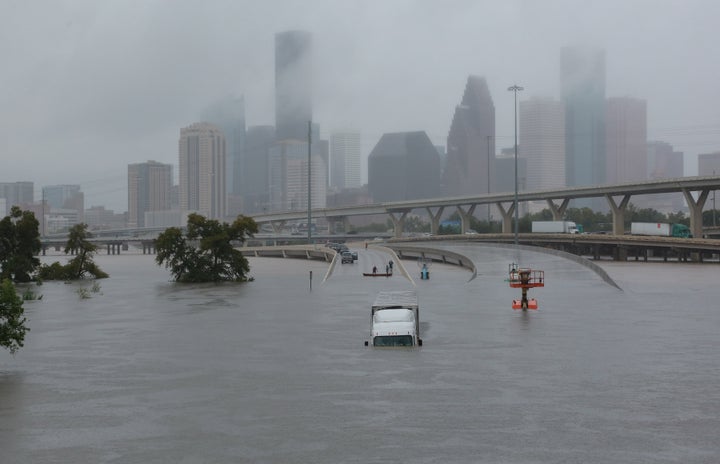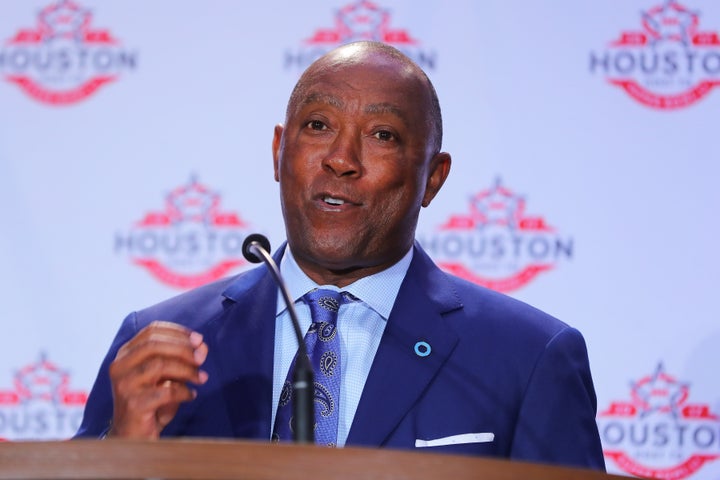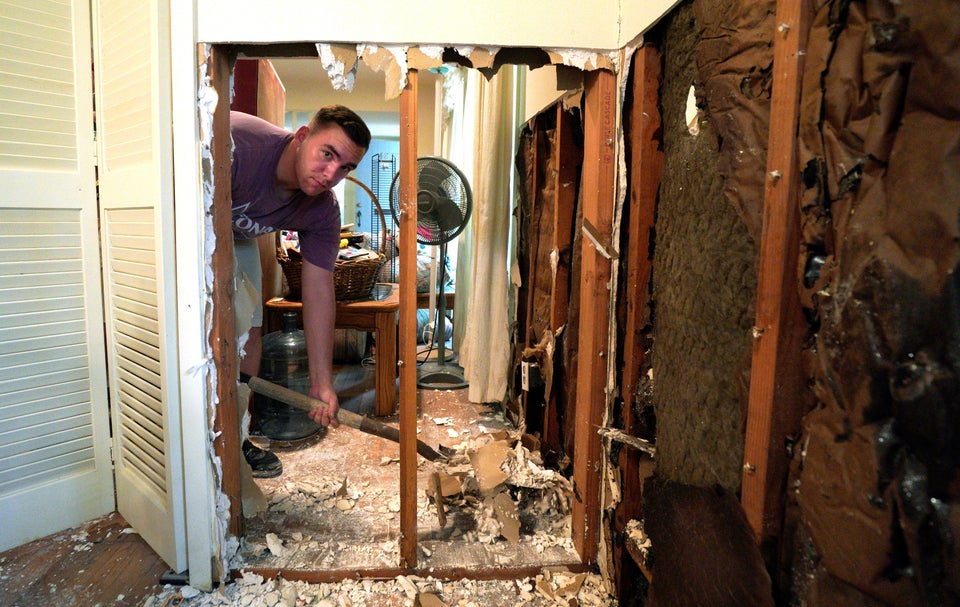As Houston begins the long rebuilding process after Hurricane Harvey, it has an opportunity to transform itself into a city ready and resilient in the face of climate change and the possibility of more extreme weather events.
Known as the “oil and gas capital of the world,” this city has grappled for years with the challenge of adapting to global warming. While it’s difficult to know whether climate change is directly responsible for a particular hurricane, some scientists say it will make storms worse and more frequent, and their aftermaths more deadly. Protecting against this now could mitigate future catastrophes. The devastation that Harvey wreaked underscores the importance of urgent action.
In late August, Harvey hit Texas as a Category 4 storm, dumping more than 50 inches of rain on parts of Houston and causing over $150 billion in damage. Before the deluge, America’s fourth-largest metropolis had been taking its first steps toward climate change preparation. Now, experts say the city must ramp up efforts to make energy usage more efficient and improve rules around urban development.
“Even if there are people who don’t believe in climate change, they accept that the weather has changed, that we are having more storms,” said Lara Cottingham, Houston’s deputy assistant director for sustainability and strategic customer initiatives.
Cottingham also notes that Hurricane Harvey was Houston’s third “100-year flood” ― an event with a 1 percent probability of occurring in any year ― in the past three years.

As a member of C40, a network of the world’s megacities committed to addressing climate change, Houston has already retrofitted city-owned buildings to reduce emissions, and it requires all new city buildings to be LEED-certified, a rating in the global green building system. The Environmental Protection Agency ranked Houston eighth on its list of the top 25 Energy Star cities, behind places such as Dallas and Chicago. More than 50 percent of the city-owned nonemergency passenger cars are hybrids. As of 2017, 89 percent of the city government’s total power needs are met by renewable energy sources.
The city is fairly environmentally progressive, compared to much of the rest of Texas. Cottingham calls Houston “a blue city in a big, red state.” Indeed, Texas’ Republican governor, Greg Abbott, is a climate change skeptic; Houston’s Democratic mayor, Sylvester Turner, is not. But Houston has a limited influence on the fossil fuel industry: Cottingham noted that many of those companies that are based in the area are outside the city limits.
Texas currently ranks 26th among all 50 states in terms of energy efficiency, according to the American Council for an Energy-Efficient Economy, a Washington-based advocacy group.
Still, Houston’s energy-efficiency effort has encouraged other private building owners to seek LEED and Energy Star certification, with many of the oil and gas companies demanding this prime real estate, said Gavin Dillingham, program director for clean energy policy at Houston Advanced Research Center, a group working closely with the city on its sustainability initiatives.

Dillingham hopes that, post-Harvey, private buildings will take advantage of programs that encourage renewable energy adoption and water conservation, such as the Property Assessed Clean Energy measure, which gives Houston commercial property owners access to low-cost loans to finance energy efficiency, renewable energy and water conservation projects.
“That could be a real game changer if we can get enough uptake by building owners,” he said of the PACE program.
Yet energy-efficiency codes don’t help prevent flooding. Houston is a flood-prone city, after all. It is flat, situated on a low-lying coastal plain, and built on soil that doesn’t drain well. But critics say runaway urban development hasn’t helped.
The media heaped blame for the catastrophic Harvey flooding on Houston’s famously loose zoning regulations. In a tweet posted Aug. 30, the mayor of Houston challenged this notion. “Zoning wouldn’t have changed anything,” he wrote. The staggering amount of rain dumped on the city would have caused damage no matter how strict the zoning regulations were, he argued.
Though zoning is now under scrutiny, especially in the most flood-prone areas of Houston, Dillingham said there’s been no discussion by city officials about making changes to urban planning rules so far.
Moving forward from a storm like Harvey will require actions and collaboration on behalf of residents and regulators, said Robert Muir-Wood, chief research officer at RMS, a catastrophe risk modeling company.
“You can’t have the fourth-largest city in the U.S. shut down simply because it rained hard,” Muir-Wood noted.
During Harvey, about 136,000 buildings flooded in Harris County, which includes Houston, with many of those constructed before 1980s regulations prohibited construction on floodplains. Dillingham said future development will likely change when new floodplain maps are released in 2018 and as more flooded homeowners are seeking buyouts from the county and Federal Emergency Management Agency.

Houston may be loath to regulate land use with zoning laws, but another option is to tighten building codes and more closely monitor how structures are made. These codes can account for rising sea level projections, said Pernille Jægerfelt, editor at the Cities 100 publication at Sustainia, a think tank that highlights successful city solutions on climate change.
“Vancouver changed its building bylaws to ensure new buildings were built to withstand the future projections,” she said.
Building designs incorporating green infrastructure and low-impact development like permeable surfaces, cisterns and ways to treat stormwater during heavy rains were already growing in popularity in Houston and may see a greater push, Dillingham said. Houston building codes now require some sort of stormwater mitigation methods, he added, and the city is trying to make its new development more low-impact, too.
Jægerfelt said a key trend is cities thinking about “green and blue infrastructure,” where parks double as water retention basins. Before it was developed, Houston was filled with bayous, which are flat, low-lying marshy areas, and the city is transforming some of these into parks, like the Buffalo Bayou in downtown, Cottingham said. Buffalo Bayou, which was a public-private partnership, is central to Houston’s flood control efforts.
The moment to implement sweeping changes may have arrived, and the city can’t afford to delay action.
“There is often the political will to take action in the aftermath of a disaster. It doesn’t last that long,” Muir-Wood noted. “Six months to a year later, the physical will and the opportunity to spend money will fade.”
